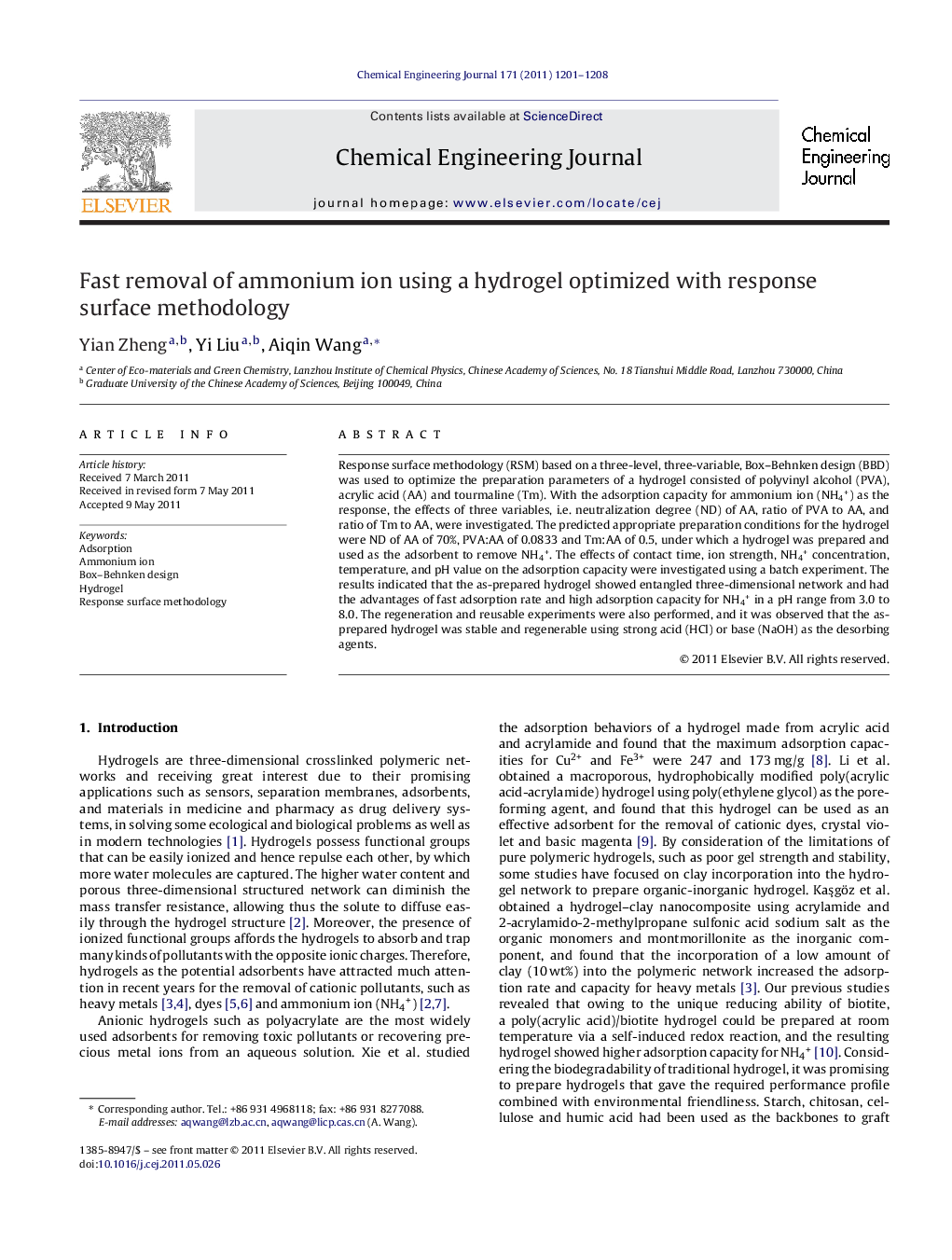| Article ID | Journal | Published Year | Pages | File Type |
|---|---|---|---|---|
| 150916 | Chemical Engineering Journal | 2011 | 8 Pages |
Response surface methodology (RSM) based on a three-level, three-variable, Box–Behnken design (BBD) was used to optimize the preparation parameters of a hydrogel consisted of polyvinyl alcohol (PVA), acrylic acid (AA) and tourmaline (Tm). With the adsorption capacity for ammonium ion (NH4+) as the response, the effects of three variables, i.e. neutralization degree (ND) of AA, ratio of PVA to AA, and ratio of Tm to AA, were investigated. The predicted appropriate preparation conditions for the hydrogel were ND of AA of 70%, PVA:AA of 0.0833 and Tm:AA of 0.5, under which a hydrogel was prepared and used as the adsorbent to remove NH4+. The effects of contact time, ion strength, NH4+ concentration, temperature, and pH value on the adsorption capacity were investigated using a batch experiment. The results indicated that the as-prepared hydrogel showed entangled three-dimensional network and had the advantages of fast adsorption rate and high adsorption capacity for NH4+ in a pH range from 3.0 to 8.0. The regeneration and reusable experiments were also performed, and it was observed that the as-prepared hydrogel was stable and regenerable using strong acid (HCl) or base (NaOH) as the desorbing agents.
► The preparation parameters of a hydrogel were optimized using response surface methodology. ► The hydrogel showed fast adsorption rate and high adsorption capacity for NH4+. ► The hydrogel has maximum, constant adsorption capacity in a pH range of 3.0–8.0 with good reusability. ► The electrostatic attraction is the controlled adsorption mechanism.
